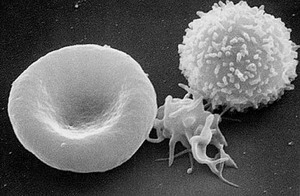According to the Red Cross, someone in the United States needs blood every 2 seconds. But only 5% of eligible residents donate blood every year. Donating blood is an excellent way of saving a life, or two. If you have never donated blood, you should seriously consider it.
Why Do People Need Blood?
People need blood for a variety of reasons. Simply put, a blood transfusion is the process of transferring blood from one person to another. Many people who have serious injuries incurred from accidents, traumas, and surgeries depend emergency blood transfusions. Without blood available from donors, many of these people would die. Additionally, many people rely on routine blood transfusions to live-many of these people suffer from serious illnesses such as cancer, anemia, blood disorders, etc.
Who is Eligible to Donate Blood?
There are certain criteria that must be met in order for someone to donate blood. These restrictions have been put in place in order to protect both the donor and the recipient. Those who are infected with HIV/AIDS, or traveled to a country that is at risk for malaria, those with hepatitis, and other blood-transferable diseases are not eligible to donate. Donors must also weigh at least approximately110 pounds and be “healthy”. Those taking certain medications are not eligible to donate. For assistance determining whether you or not you are eligible to donate blood, please refer to the Red Cross website at http://www.redcross.org/en/eligibility. If you are not eligible to donate blood, there are other volunteer positions available through the Red Cross and other blood donation centers.
How Do I Donate Blood?
First you must locate a blood donation center or blood bank near you. While the Red Cross does host blood drives all across the country through the year, you do not need to donate through the Red Cross. Simply Google “blood bank” and your city and you will certainly find a donation center to suit your needs.
On the day of your blood donation, you will first be asked to complete forms to determine your eligibility. You will also need to give a small blood sample (attained through a simple thumb prick) to determine whether your iron level is adequate for donation. After you pass these steps, you’ll be ready to donate blood.
You will be asked which arm you’d like to donate from-keep in mind that the arm you choose will be bandaged up after the donation is over, so you may want to choose a “non-writing arm”. This is completely up to you. You will then be seated and your arm will be palpated in order to find a large vein, ripe for blood donation. The process is all very easy from here and you will just need to sit back and relax.
Types of Blood Donation
While most people usually donate “whole blood”, there are now other types of blood donation that are available. The blood center that you choose will advise you as to the types of blood donation, but the decision will be up to you. To learn more about the different donation types, including whole blood, platelets, double red cells, and plasma, simply look at the Red Cross website at http://www1.givebloodgivelife.org/donors/types/.
Tips
If it is your first time donating, I suggest bringing someone with you to keep you company. Blood donation can be scary at first, especially for those that are skirmish about blood. I also suggest drinking LOTS of water the day before and day of. The more water you drink, the fatter your veins will be, and the easier and quicker the donation. Also be sure to have hearty breakfast before donation, and a good meal afterwards to replenish the caloric loss incurred during blood donation.
If you’ve never donated blood before, definitely give it a try to see whether it’s right for you. Donating blood is one of the most invaluable ways of helping people-by giving and saving life.
Reference:
- https://www.givelife.org/index_flash.cfm



